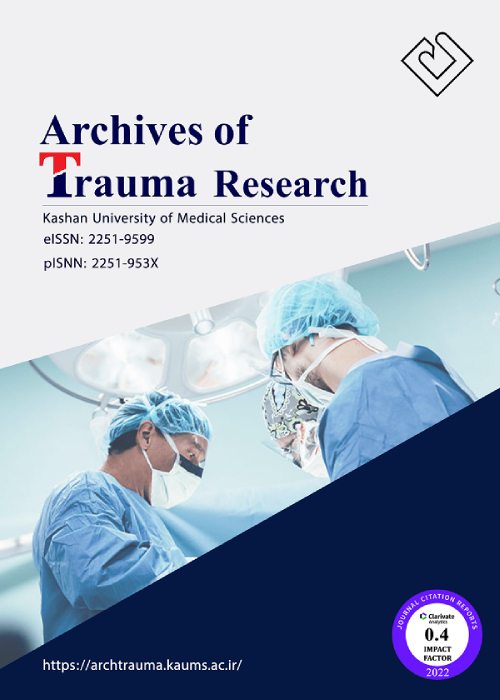A comparative study on the ability of trauma severity-assessing methods in determining the prognosis of patients having accident and referred to Imam Khomeini Hospital of Urmia in 2016
Trauma is the leading cause of death and disability in developing countries. According to the World Health Organization projections by 2020, accidents alone are the second leading cause of missing year around the world. Therefore, the aim of this study was to compare the ability of trauma severity‑assessing methods in determining the prognosis of accident patients referred to Imam Khomeini Hospital of Urmia in 2016.
In this study, the severity of trauma in traffic accident patients referring to Imam Khomeini Hospital of Urmia was determined using the Injury Severity Score (ISS), Revised Trauma Score (RTS), Trauma and Injury Severity Score (TRISS), and A Severity Characterization of Trauma (ASCOT), in a 1‑year period, via the census method on 2015 hospitalized accident victims, and the ability of these methods to predict mortality and morbidity, length of stay in hospital, and hospital length charges were investigated by the receiver operating characteristic curve of regression methods. To this end, the hospital records of accident victims who were hospitalized for at least 1 day or whose deaths were examined along with their autopsy reports were the main components of this study.
The mean age of the patients was 33.63 ± 18.53 years, and their age range was 1–96 years. The ratio of males to females was 2.73. In addition, in terms of job status (46.8%), they were free. The majority of women were homemakers (70.8%). In the two gender groups, most accidents occurred within the city, The mean severity of lesions based on ISS system was 16.44 ± 16.28 and 16.8% of ISS injuries were above 25. The mean RTS of the patients was 7.69 ± 0.54, which ranged from 0 to 7.84, and the mean TRISS of the patients was 92.24 ± 15.87. The trauma means via the ASCOT method was 5.35 ± 1.85. The difference in the severity of trauma (calculated by each of the methods of ISS, RTS, TRISS, and ASCOT) was significant between those who survived and those who died.
In this study, most of the accidents happened in males, married, undergraduate, and homemaker, and those on the street as well, and the RTS and TRISS methods showed the highest ability in predicting mortality. Given the usefulness and special applications of these methods, their use in designing a national care system in the trauma area is recommended.
- حق عضویت دریافتی صرف حمایت از نشریات عضو و نگهداری، تکمیل و توسعه مگیران میشود.
- پرداخت حق اشتراک و دانلود مقالات اجازه بازنشر آن در سایر رسانههای چاپی و دیجیتال را به کاربر نمیدهد.



